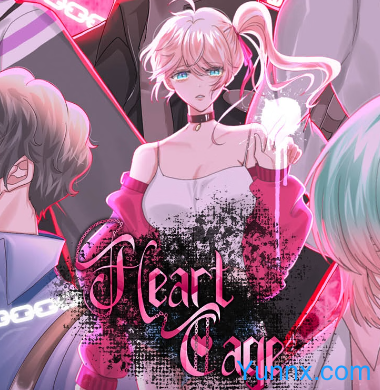Guide to "Genius Invokation TCG" in Genshin Impact: Rules, Strategies, and Winning Tips
May 01, 2025
"Genius Invokation TCG," also known as "Seven Sacred Summons," is a strategic card game within Genshin Impact that combines tactical deckbuilding, elemental synergy, and dynamic turn-based combat. This guide provides an in-depth breakdown of its core mechanics, advanced strategies, and meta insights to help players dominate both PvE and PvP matches.
1. Core Rules and Objectives
Objective
- Defeat your opponent by reducing all three of their characters’ HP to zero. Each character starts with 10 HP, and the game ends when one side loses all three.
Key Mechanics
1. Characters:
- Players pre-select three characters (e.g., Ayaka, Yoimiya, Chongyun) before the match. Each character has unique Elemental Skills, Bursts, and synergies.
- Elemental Reactions: Trigger reactions like Melt (Pyro + Cryo) or Overload (Pyro + Electro) to amplify damage or disrupt opponents.
2. Elemental Dice:
- Each turn, players roll eight Elemental Dice (aligned with character elements or universal "Omni Dice"). Dice determine actions like attacks, card plays, or character switches.
3. Turn Structure:
- The game uses a nested turn system: players alternate actions (e.g., attacks, card usage) until both pass, ending the round.
2. Essential Strategies
Dice Management
- Prioritize Effective Dice: Retain dice matching your active character’s element to maximize skill usage. Discard irrelevant dice strategically, especially if holding cards like Liben (converts leftover dice to Omni Dice).
- Reroll Timing: Reroll non-matching dice early unless saving for specific cards (e.g., weapons requiring same-element dice).
Character Rotation
- Offensive Swaps: Switch characters to trigger Elemental Reactions or unleash Bursts. Example: Use Chongyun’s Cryo skill to enable Melt with Yoimiya’s Pyro attacks.
- Defensive Swaps: Protect low-HP characters by swapping to "tanks" like Noelle or Zhongli. Anticipate opponents’ burst damage to avoid overcommitment.
Card Usage
- Key Cards:
- Liben: Converts unused dice into Omni Dice and draws cards. Essential for OTK (One-Turn Kill) decks.
- Gambler’s Earrings: Grants bonus dice after defeating an enemy, enabling snowball victories.
- Lotus Flower Crisp: Heals characters and disrupts opponents’ lethal calculations.
- Delay High-Value Cards: Hold cards like Parametric Transformer or Starsigns until critical moments to surprise opponents.
3. Advanced Techniques
Damage Thresholds and Lethal Calculation
- Overkill Avoidance: Calculate exact damage needed to eliminate opponents. Overcommitting wastes dice and leaves you vulnerable.
- Healing vs. Aggression: Prioritize damage over healing unless survival ensures a game-winning Burst (e.g., Yoimiya’s Pyro barrage).
Meta Deckbuilding
- OTK Decks: Focus on burst combos using characters like Yoimiya and Chongyun. Key cards: Gambler’s Earrings, Minty Meat Rolls, and Liben.
- Control Decks: Disrupt opponents with freeze (e.g., Ayaka + Chongyun) or forced swaps (e.g., Jean’s Gale Blade).
Mind Games
- Bluffing: Pretend to exhaust resources by spending dice early, then counterattack with hidden cards.
- Predict Opponent Moves: Track discarded cards and dice usage to anticipate Elemental Bursts or swaps.
4. PvP vs. PvE Tactics
- PvE (NPC Battles): Use overpowered meta decks (e.g., Double Cryo + Pyro) to breeze through challenges. NPCs often lack adaptability.
- PvP (Player Battles): Adapt to opponents’ strategies. Counter T0 decks like Freeze Comp with cleanse cards (e.g., Quick Knit) or aggressive swaps.
5. Character and Card Synergies
1. Yoimiya + Ayaka + Chongyun:
- Yoimiya’s Burst applies Pyro, enabling Ayaka’s Cryo skills for Melt reactions. Chongyun provides Cryo infusion and burst damage.
2. Liben + Parametric Transformer:
- Store excess dice with Liben, then convert them into burst resources for the next round.
3. Freeze Control (Ayaka + Mona):
- Lock opponents with Freeze reactions, denying their actions while dealing chip damage.
6. Common Mistakes to Avoid
1. Overextending: Wasting dice on unnecessary swaps or low-impact cards.
2. Ignoring Elemental Counters: Failing to adjust to opponents’ elemental shields (e.g., using Pyro against Cryo shields).
3. Misusing Bursts: Saving Bursts too long or using them without setup (e.g., no Elemental Reactions).
Conclusion
Mastering Genius Invokation TCG requires balancing aggression, resource management, and adaptability. Focus on optimizing dice usage, leveraging character synergies, and anticipating opponents’ moves. For deck codes, meta updates, and community strategies, explore platforms like HoYoLAB or Teyvat Interactive Map.
Recommend Apps









